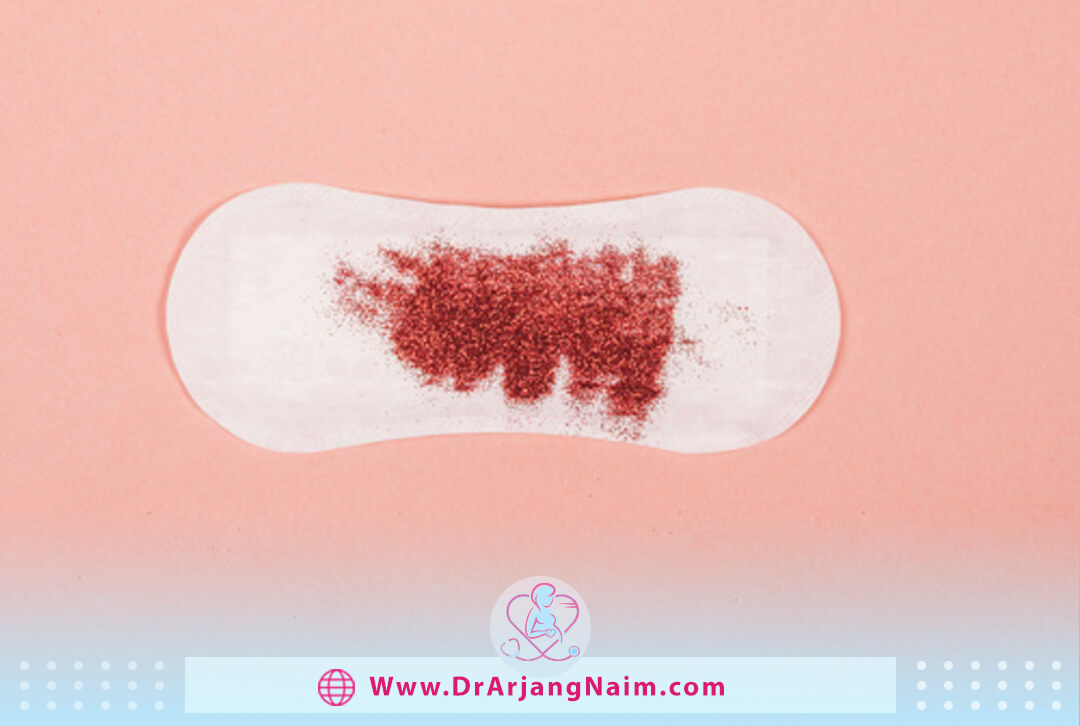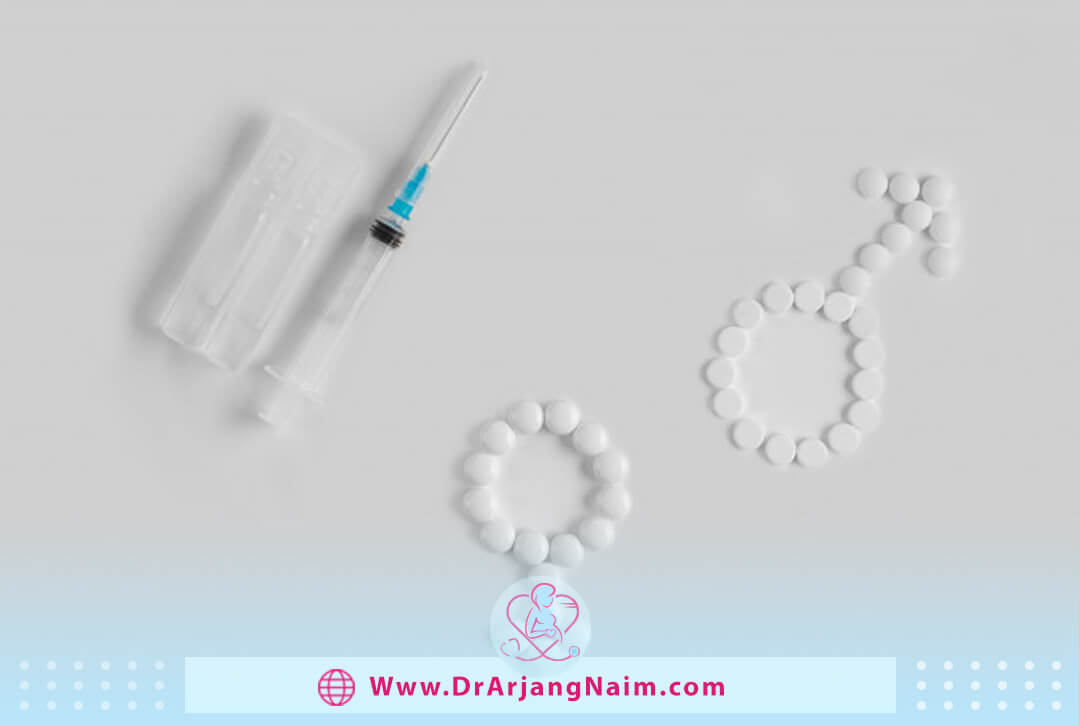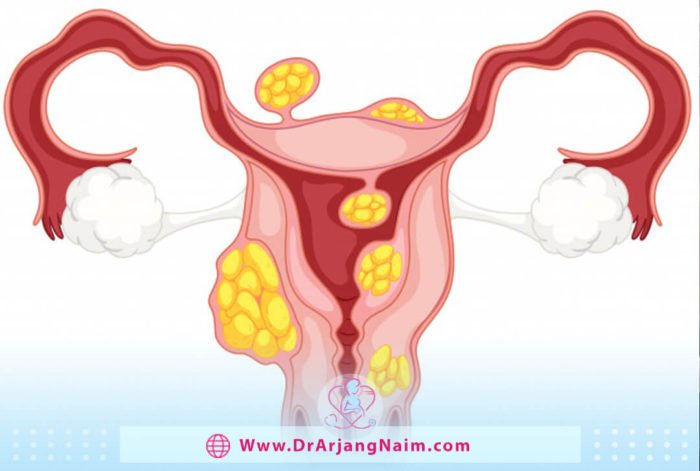Fibroids are benign tumors that grow in or on the uterus. They may affect the likelihood of fertility. Uterine fibroids are very common. Infertility is generally defined as not conceiving after one year of unprotected sex. Infertility has many causes. One of the causes is uterine fibroids. They, also called myomas, are benign uterine smooth muscle tissue growths.
They are the most common tumors in the lower abdomen seen in premenopausal women. Myomas are found in 30-40% of all women between the ages of 30 and 40 but can occur at any other age. In addition, they are more common in African women than in women of other ethnicities.
The relationship between Uterine fibroids and infertility is particularly difficult due to the heterogeneity of fibroids in terms of their size, location, number, and heterogeneity observed in the patient population. It may not be a problem in some cases, but it can sometimes cause pregnancy complications such as pain, infertility, miscarriage, or premature birth.
What are uterine fibroids?
They are muscle tumors that may form in the wall of the uterus. They are usually benign, meaning they are not cancerous. Less than 1 in 1,000 fibroids are cancerous. They are divided into one of the following four categories based on where they grow:
- Intramural: In the wall of the uterus
- Subserosal: On the outside of the uterus
- Submucosal: In the uterine cavity
- Pedunculated: Outside the uterus, attached by a stem
The size of fibroids varies from small (the size of the seed) to large (the size of a grapefruit). Women who get it may have one or more fibroids. The location and size of it determine what treatment they need and what treatment is most effective.
Signs and symptoms of uterine fibroids

While many women have mild or no symptoms, some women have significant symptoms.
Heavy bleeding
Some women with myomas may bleed a lot during menstruation. Heavy bleeding often occurs simultaneously with menstruation and painful cramps. Irregular or excessive bleeding may lead to anemia and other complications.
For more information, read the Menometrorrhagia article.
Feeling of fullness
One of the symptoms of fibroids is a feeling of satiety in the lower part of the stomach. This is often accompanied by significant bloating in the abdomen.
Excessive urination
Some women with myomas may have a frequent urge to urinate.
Pain during sex
One of the most common signs or symptoms of fibroids is pelvic pain during sex. The pain can range from constant to intermittent and dull to severe.
Lower back pain
Low back pain, especially recurrent pain, can be a sign of fibroids in the uterus or cervix.
Other symptoms include:
- Bleeding between periods
- Chronic vaginal discharge
- Constipation or other digestive issues
- Pressure on the rectum, causing constipation or difficult bowel movements
Do uterine fibroids need to be treated?
Treatment for myomas depends on the symptoms, as well as the size and location of the fibroids. If there are no symptoms, your doctor may only consider its size of it. The recommended treatment depends on the following factors:
- Desire to preserve the uterus
- Future plans for pregnancy
- Location of fibroids
- Number of fibroids
- Size of fibroids
- Symptoms to be experienced
What is the effect of uterine fibroids on pregnancy?
Most women will experience no effects from fibroids during their pregnancy. Researchers note that the most common complication of fibroids during pregnancy is pain, which is often seen in women with fibroids larger than 5 cm in the last two trimesters. Myomas may increase the risk of other complications during pregnancy and childbirth. These include:
- Fetal growth restriction: Large fibroids may prevent the fetus from fully growing due to reduced uterine space.
- Placental abruption: Placental abruption happens when the placenta separates from the uterine wall because it is blocked by a fibroid. This reduces oxygen and vital nutrients.
- Preterm delivery: Fibroma pain may lead to uterine contractions resulting in preterm delivery.
- Cesarean delivery: People with fibroids are more likely to have a cesarean delivery than people without it.
- Breech position: In a normal pregnancy, the baby automatically rotates in the womb, and the head turns down to prepare for birth, so if the fetus does not rotate during pregnancy, it can cause problems for both mother and baby. One of the most common abnormalities is the breech position, in which the fetus is raised during delivery. This condition may occur in women with fibroids.
- Miscarriage: Women with fibroids are twice as likely to have a miscarriage as women without fibroids.
What happens to uterine fibroids during pregnancy?
Fibroids are found in 2 to 12% of pregnant women, but not all myomas get bigger and do not cause problems during pregnancy. If a myoma grows, it usually occurs in the first 12 weeks of pregnancy when estrogen levels rise.
How are uterine fibroids treated during pregnancy?
During pregnancy, treatment of uterine fibroids is limited due to the risk to the fetus. Bed rest, hydration, and mild pain relief may be prescribed to help pregnant mothers manage the symptoms of fibroids.
In very rare cases, myomectomy can be performed in women in the second half of pregnancy. This method removes the fibroid from outside the uterus or from inside the uterine wall while the uterus remains intact. Myomas that grow in the uterine cavity are usually left in place due to potential risks to the fetus.
What are the effects of fibroids on fertility?

Many women with fibroids can become pregnant naturally. Treatment may not even be necessary for pregnancy. Approximately 5% – 10% of infertile women have fibroids. The size and position of uterine fibroids affect infertility. For example, submucosal fibroids are a type of fibroid that grows and protrudes into the uterine cavity, increasing the risk of infertility or miscarriage.
While fibroids may cause infertility for some women, there are more explanations for infertility. If a woman has trouble getting or staying pregnant, the doctor may consider other possible causes before assigning it to a fibroid.
How do uterine fibroids cause infertility?
Fibroids can cause infertility for a variety of reasons. These reasons include the following:
- The cervical deformity can affect the number of sperm that can enter the uterus.
- Changes in the shape of the uterus can interfere with the movement of sperm or the embryo.
- Myomas can block the fallopian tubes.
- Uterine fibroid can affect the size of the lining of the uterine cavity.
- Blood flow to the uterine cavity can be affected, reducing the ability of the embryo to attach to the uterine wall or grow.
Pre-pregnancy fibroid treatment to improve fertility
Treatment of uterine fibroids before pregnancy may improve the risk of fertility. The most common treatments for fibroids that maintain fertility include the following:
- Myomectomy: This surgical procedure is used to remove fibroids. This method increases the need for cesarean delivery and waits about three months after the operation before trying to conceive.
- Hormonal birth control pills: People who take birth control pills cannot get pregnant. But birth control pills can help reduce symptoms such as heavy bleeding and painful periods.
- Intrauterine device (IUD): Like birth control pills, it prevents pregnancy as long as an IUD is used. In addition to preserving fertility, it can relieve some of the symptoms.
- Gonadotropin-releasing hormone (Gn-RH) agonists: This type of drug blocks the production of hormones that lead to ovulation and menstruation, so it is impossible to get pregnant by taking this drug. These drugs can help shrink fibroids.
- Myolysis: This method uses an electric beam of energy from a current, laser, or radiofrequency to shrink the blood vessels that feed the fibroids.
Other treatments are available for women with myomas who may want to have children in the future. Each treatment has its risks and side effects, so talk to your doctor about your options.
Likewise, ask your doctor how long you should wait before trying to conceive after treatment. With some treatments, such as birth control pills, you can try pregnancy as soon as you stop using them. For others, there may be a waiting period.
Should women with uterine fibroids freeze their eggs?
Freezing eggs before some fibroid treatments, such as embolization, prevent the eggs from being damaged unintentionally. Egg freezing also allows women who are unable to conceive or maintain fertility (due to fibroids or surgery) to later use their eggs for in vitro fertilization with a surrogate uterus.
However, it is worth noting that women with very large myomas sometimes cannot freeze their eggs before surgery, as the myomas may be large enough to prevent a doctor from seeing or accessing the ovaries to be monitored or retrieved.
The effect of uterine fibroids on assisted reproductive techniques

Although abnormal egg transfer and fallopian tubes are removed using assisted reproductive techniques (ART), fibroids can still compromise fertility by altering endometrial acceptance. Therefore, it can harm fetal implantation and reduce the risk of pregnancy.
The location of the myomas is very influential in the results of assisted reproductive techniques. For example, submucosal fibroids that change the internal shape of the uterine cavity, in particular, significantly reduce the rate of implantation and pregnancy in assisted reproductive techniques. The risk of pregnancy failure and fetal implantation in ART is higher in women with large, multiple submucosal, and intramuscular fibroids than in infertile women without fibroids. Subcutaneous fibroids have little effect on fertility with assisted reproductive techniques.
Diet and lifestyle changes to reduce the risk of fibroids
There are a number of changes that can help reduce the risk of myomas.
Follow a Mediterranean diet
Add fresh and cooked vegetables, fresh fruits, legumes, and fish to your daily diet. The Mediterranean diet is one way to do this. Research shows that eating these foods regularly can help reduce the risk of myomas. On the other hand, eating beef, ham, lamb, and other red meats may increase the risk.
Cut back on alcohol
Drinking any alcohol may increase the risk of fibroids because alcohol increases the levels of hormones needed for myomas growth. Alcohol also causes inflammation.
Balance estrogen
Estrogen is a hormone that is necessary for healthy fertility in both men and women. However, too much estrogen can increase or worsen the risk of uterine fibroids. Many fibroid treatments work by lowering estrogen levels. Other ways to balance estrogen levels include:
- Losing weight
- Avoiding hormone-disrupting chemicals
Blood pressure control
Research shows that a large number of women with severe myomas also have high blood pressure. Balancing blood pressure is vital to overall health. Strategies to lower blood pressure include:
- Avoid added salt
- Limit high-sodium processed and packaged foods
- Exercise regularly
- Check your blood pressure daily
- Lose weight
- Increase potassium by eating a majority of plants at each meal
- Quit smoking
- See your doctor for a regular checkup
Get enough vitamin D
Vitamin D may help reduce the risk of fibroids by approximately 32%. Vitamin D is made naturally when the skin is exposed to sunlight. If your skin is dark or you live in colder climates, you are more likely to lack it. Supplements can help increase vitamin D levels.
Foods that should be consumed in the presence of fibroids
Diet alone cannot cure fibroids. However, a balanced diet may also help reduce some of the symptoms and complications. Some foods may help slow the growth of myomas in some cases.
Fiber
Fiber-rich foods help lose weight and balance hormones. They can also help keep blood sugar levels steady. For this reason, fiber may help prevent and grow fibroids.
Potassium
Potassium reduces salt intake effects and helps to balance blood pressure.
Dairy
Add dairy products such as yogurt and high-fat cheese to your diet. Dairy products are rich in calcium, phosphorus, and magnesium. These minerals may help prevent fibroids and slow their growth. Fortified milk also contains vitamin D.
Green tea
Green tea contains several antioxidants. Epigallocatechin gallate in green tea may help reduce fibroid growth by reducing inflammation and high estrogen levels. Green tea also improves the symptoms of myomas due to severe bleeding, such as iron deficiency.
The bottom line
Uterine fibroids are a common noncancerous growth in the uterus. Although not likely to be cancerous, they can affect the quality of life.
Doctors can prescribe hormone therapy and other medications to treat the symptoms of uterine fibroids. Surgery is the most effective treatment.
Uterine fibroids are common and can affect fertility in many ways. They can affect the meeting of sperm and egg, the implantation of the fetus, the continuation of the pregnancy, and the growth and position of the baby. Treatment of myomas depends on the individual’s condition. Treatment based on symptoms may improve overall fertility.
Dr. Arjang Naim, MD, after thoroughly examining the patient’s condition, if necessary, treats fibroids to improve infertility or improve the fetus’s condition.
Additional questions
- What size of fibroid is normal?
Fibroids can grow as a single nodule or in a cluster. Fibroid clusters can range in size from 1 mm to more than 20 cm.
- What birth control shrinks fibroids?
Low-dose birth control pills can help control heavy bleeding and slow the growth of fibroids.
- Can radio frequency shrink fibroids?
Radiofrequency ablation is a minimally invasive procedure that uses heat to target fibroids and significantly reduce their size.
- What is the best age for egg freezing?
Women who freeze their eggs before age 35 have a better chance of a successful pregnancy than women who freeze their eggs after age 35.
- Does removing fibroids improve fertility?
Removing fibroids can increase a person’s fertility and make surgery a viable option for achieving a healthy pregnancy.
References
https://www.medicalnewstoday.com/articles/326808#medical-treatments
https://www.healthline.com/health/womens-health/fibroids-pregnancy
https://www.verywellfamily.com/how-fibroids-affect-fertility-and-pregnancy-2371619
https://www.medicinenet.com/how_do_fibroids_affect_pregnancy/article.htm
https://www.mayoclinic.org/fibroids-and-fertility/vid-20509513
https://www.healthline.com/health/womens-health/fibroids-pregnancy#outlook
https://www.healthline.com/health/fibroids-diet#foods-to-avoid




